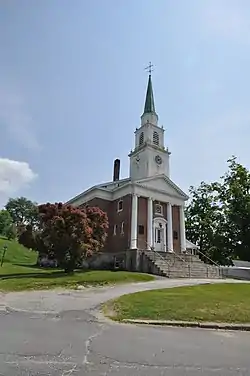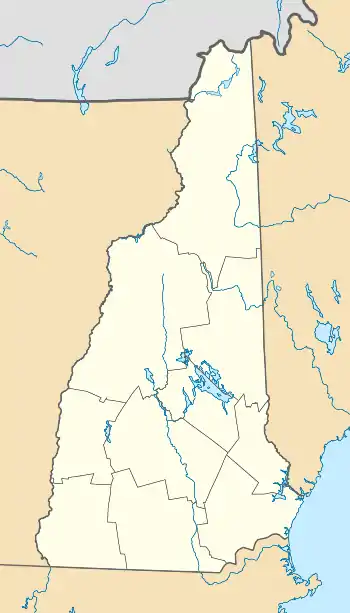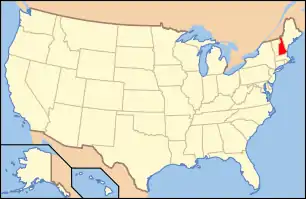Winchester Memorial Church
The Winchester Memorial Church, also known as the New Hampshire Conservatory of Music and the Arts, is a historic civic building in the center of Winchester, New Hampshire, United States. Built in 1912, it is a prominent local example of Colonial Revival architecture. It replaced a meeting house that was the location of the Winchester Profession, a key development in the history of Unitarian Universalism. The building was listed on the National Register of Historic Places in 1980.[1] It was acquired in 2006 by the Universalist Heritage Foundation as a memorial to the site's role in Universalist history.
New Hampshire Conservatory of Music and the Arts | |
 | |
  | |
| Location | Central Sq., Winchester, New Hampshire |
|---|---|
| Coordinates | 42°46′24″N 72°22′59″W |
| Area | 0.7 acres (0.28 ha) |
| Built | 1912 |
| Architect | St. Clair, S. Winthrop |
| Architectural style | Colonial Revival |
| NRHP reference No. | 80000276[1] |
| Added to NRHP | May 15, 1980 |
Description and history
The Winchester Memorial Church is located in the town's village center, sited prominently on a rise at the junction of Michigan and Richmond streets. It is a tall single-story red brick building, with a gabled roof and well-proportioned Colonial Revival styling. It has a projecting gabled entry pavilion, fronted by four pilasters supporting a modillioned pediment. A tower rises above the pavilion, with square clock and bell stages topped by an octagonal stage and steeple. The interior has a large auditorium with a balcony across the rear. Under the balcony are offices and meeting rooms. A number of its windows are stained glass, designed by the George W. Wise Co. of Boston.[2]
The building was designed by S. Winthrop St. Clair and built in 1912 to replace a meeting house (combination town hall and church) that was destroyed by fire. The meeting house it replaced was the location of the Winchester Profession, a key development in the history of Unitarian Universalism,[2] and it was purchased in 2006 by the Universalist Heritage Foundation as a memorial to that history.
References
- "National Register Information System". National Register of Historic Places. National Park Service. July 9, 2010.
- "NRHP nomination for New Hampshire Conservatory of Music and the Arts". National Park Service. Retrieved 2014-04-26.
